This trunk set explores the diversity of the men and women in the Continental Army and the historical context of the Revolutionary era through the stories of five characters: a Virginia Continental soldier, a Pennsylvania rifleman, a sailor turned soldier from Marblehead, Massachusetts, an African American soldier from the First Rhode Island Regiment and a woman who followed the army. In addition to reproduction clothing for these five characters, the trunks feature facsimiles of historical documents along with modern texts that support discussions on what life was like in and around the military during the Revolution. A facsimile edition of General Steuben’s famed Revolutionary War drill manual illustrates the most important way in which Washington and other leaders professionalized the Continental Army. Poster-sized reproductions of Emanuel Leutze’s Washington Crossing the Delaware, Jean Baptiste Antoine de Verger’s American foot-soldiers during the Yorktown campaign, and a 1782 map detailing the siege of Yorktown titled Plan of the Investment of York and Gloucester convey some of the most iconic images of the war.
THE CONTINENTAL ARMY TRUNKS ARE COMPLETELY BOOKED FOR 2024-25 AND 2025-26.
CHARACTER HISTORY AND CONTENT
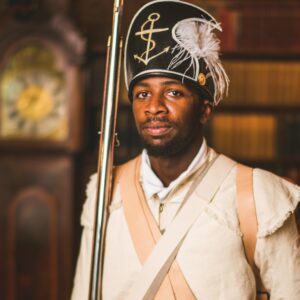
African American Soldiers
For information about the primary sources that inspired this First Rhode Island Regimental soldier’s backstory, including the character’s clothing and equipment inventory, and related student and teacher resources from the American Revolution Institute, click the button below.
African American soldiers
Continental Army Soldiers
For information about the primary sources that inspired this First Virginia Regiment Continental Army soldier’s backstory, including the character’s clothing and equipment inventory, and related student and teacher resources from the American Revolution Institute, click the button below.
Continental Army soldiers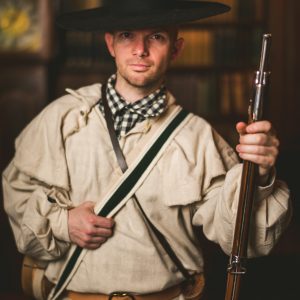
Frontier Riflemen
For information about the primary sources that inspired this First Pennsylvania Battalion rifleman’s backstory, including the character’s clothing and equipment inventory, and related student and teacher resources from the American Revolution Institute, click the button below.
Frontier riflemen
Soldiers from the Shore
For information about the primary sources that inspired this Massachusetts sailor’s backstory, including the character’s clothing and equipment inventory, and related student and teacher resources from the American Revolution Institute, click the button below.
Soldiers from the Shore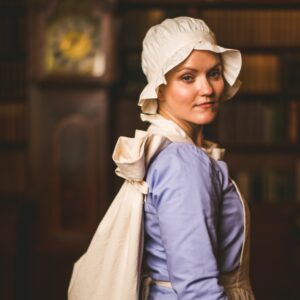
Women with the Continental Army
For information about the primary sources that inspired this woman with the Continental Army’s backstory, including the character’s clothing and equipment inventory, and related student and teacher resources from the American Revolution Institute, click the button below.
Women with the Continental Army
LESSON PLANS
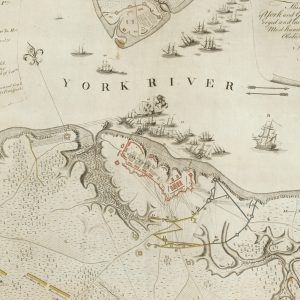
Bauman’s Plan of the Investment of York and Gloucester
Commissioned by George Washington, Major Sebastian Bauman’s map is drawn from surveys taken at the site of the Siege of Yorktown in the days following the British surrender.
master teacher lesson featuring Bauman's map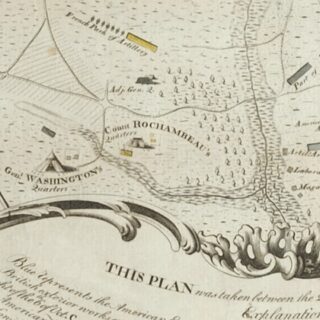
“the welcome news of your arrival…”
The Washington-Rochambeau Revolutionary Route follows the fifteen-month trail of French commander General Jean Baptiste Donatien de Vimeur, comte de Rochambeau, and his force of more than five thousand French soldiers, from their landing in Newport, Rhode Island, in July 1780 to their rendezvous with George Washington and the Continental Army, and the two armies’ combined march southward to Yorktown, Virginia, where they faced the British in the fall of 1781. These lessons provide a glimpse into late eighteenth-century America through the eyes of the French soldiers and officers engaged along the route, showing a fascinating outside perspective on both life in the colonies as well as the diverse population of soldiers in the American army.
master teacher lesson featuring Washington-Rochambeau Route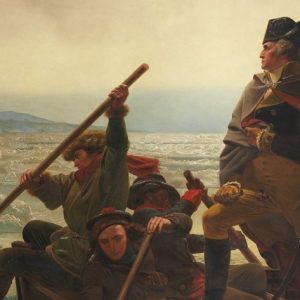
Leutze’s Washington Crossing the Delaware
Emanuel Leutze’s painting Washington Crossing the Delaware was completed in Germany seventy-five years after George Washington’s legendary victory at Trenton, yet the painting has become perhaps the most iconic image commemorating the American Revolution. In this lesson, students will analyze the painting for themes of unity and diversity, and appreciate the historical contexts of both the depicted scene and the creation of the painting.
objects of revolution lesson featuring Leutze's painting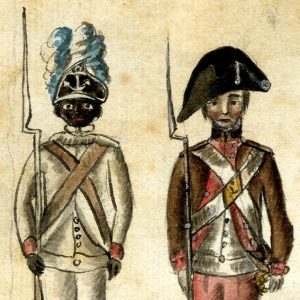
Verger’s “Four Soldiers”
King Louis XVI of France sent supplies and soldiers as part of the Franco-American alliance during the Revolutionary War, including French officer Jean Baptiste Antoine de Verger who arrived with General Rochambeau’s troops. While at Yorktown, Verger created a watercolor depicting soldiers in the Continental Army now nicknamed “Four Soldiers.” In this lesson, students will investigate this image for indicators of diversity within the ranks of the Continental Army and explore how the common ideal of liberty unified American soldiers despite their regional differences.
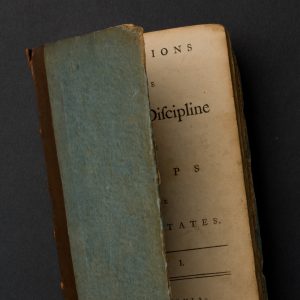
Steuben’s “Blue Book”
Friedrich Wilhelm Ludolf Gerhard Augustin Steuben of Prussia, also known as Baron von Steuben, was an aide to Frederick the Great. During the American Revolution, he was appointed inspector general of the Continental Army. George Washington asked Steuben to create a manual of drill instruction for the Continental Army, and in 1779, Congress adopted the Regulations for the Order and Discipline of the Troops of the United States. Largely printed on blue paper-covered boards, Regulations became informally known as the “Blue Book”. This lesson examines von Steuben’s role in the development of the Continental Army.
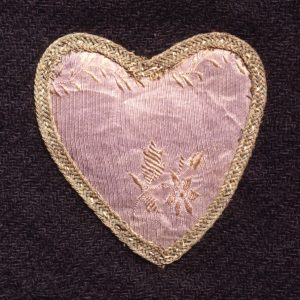
Washington’s “Purple Heart”
George Washington created the Badge of Military Merit—the first American military decoration for enlisted men—on August 7, 1782. Soldiers were honored with the award for “instances of unusual gallantry…extraordinary fidelity and essential service.” This lesson invites students to consider the significance of the badge and other awards given for meritorious conduct in the war, its 1932 revival as the modern Purple Heart and George Washington’s conviction that in the new American republic, the “road to glory” was open to all.
objects of revolution lesson featuring the badge of military merit
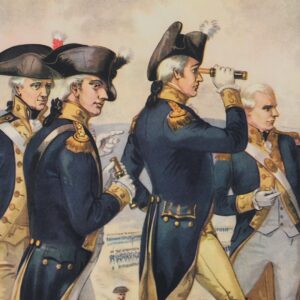
Washington Takes Command
When George Washington attended the Second Continental Congress in 1775 as a Virginia delegate, he brought with him both the military reputation he had established during the French and Indian War as well as his militia uniform. As the Congress searched for a commander in chief of the army, some favored former British officer Charles Lee, but Samuel Adams argued the southern colonies would only support the cause if a Virginian led the army . . . and he promptly nominated George Washington.
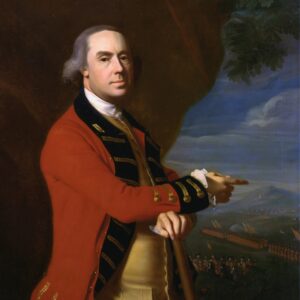
Between Commanders in Chief
The commander in chief of the Continental Army, George Washington, and the commander in chief of British forces in the New World, Thomas Gage, served together during the French and Indian War. They were among the few survivors of what became known as Braddock’s Defeat, a 1755 battle in the Ohio Valley where 977 of the 1,459 British and American soldiers were killed or wounded. Letters composed and exchanged between Washington and Gage in August 1775 shed light on their complicated relationship following the outbreak of hostilities in Massachusetts that propelled the United States and Great Britain into war.
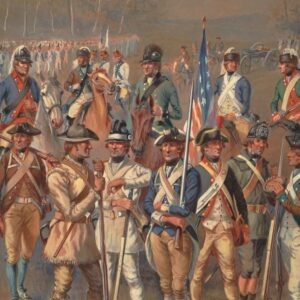
George Washington’s Great Challenge
George Washington’s great challenge was to bring discipline, order and unity to an army comprised of volunteers divided by region, class and culture. His troops came from many parts of America, which at the time was like coming together from distant countries; different customs and manners sometimes caused misunderstandings and conflict. These volunteers joined the common cause but understood the meaning of that cause in very different ways.
revolution on paper lesson: george washington's great challenge
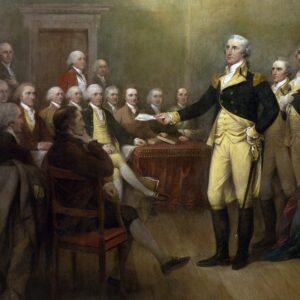
The American Cincinnatus
George Washington’s willingness to resign his power for the good of the republic earned him the title of “American Cincinnatus.” The American painter Benjamin West liked to tell the story of his conversation with King George III during the war. Asked what General Washington would do if he prevailed, West said he thought he would return to his farm. “If he does that,” said the King, “he will be the greatest man in the world.”